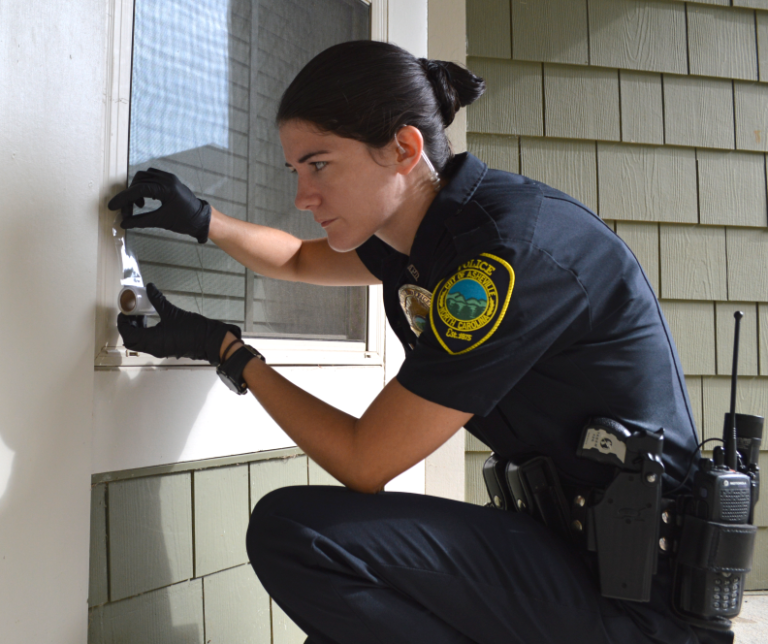We’ve all seen criminal investigations shows like CSI. Their increase in popularity has warped the public perception of crime scene forensics and forensic technicians. The public assumes that every crime scene contains DNA, fingerprints and easily identifiable clues that assist in the quick apprehension of the bad guy.
Although in many instances these clues do exist, things aren’t as easy as they are portrayed on television.
The Asheville Police Department is fortunate to have a Forensic Services Unit to serve the community. This unit is comprised of highly trained personnel that are experts in a myriad of techniques related to the field of forensic science. Their day-to-day duties vary greatly, from processing scenes of violent crimes, to crime scene photography, to providing expert testimony in criminal proceedings. However, it is a challenge for this small unit to respond to every crime scene. In order to expand forensic services, and better serve the people of Asheville, the department formed a Patrol Forensics section.
Leigh Thomas, who is an adjunct instructor in Criminalistics at AB-Tech, and also the Forensics Services Supervisor, developed a rigorous training program for these officers. Since February of 2015, Thomas has completed four training sessions for this select group of officers. As of August there are 19 individuals that serve as Forensic Patrol Officers. This group has responded to more than 400 calls for service to assist in crime scene processing.
Identifying latent prints key to solving some crimes
Each officer is provided a latent forensic kit used to pull latent prints. Latent prints are often partial fingerprint impressions left by friction ridge skin on a surface. Sometimes they are visible, other times invisible. Latent prints are created by the oil and debris from our skin that is left behind when we touch different surfaces. These prints are a pattern of valleys and ridges. The powders – black and magnetic – are used to harvest the prints from both non-porous and porous substances respectfully. After pulling a print from a crime scene the print is taken to the lab where Mark Scholtz, a Forensic Technician, runs it through SPEX – local database – and the Automatic Fingerprint Identification System (AFIS) – national database maintained by the FBI. Mark then manually compares the latent prints to the prints of the potential suspects retrieved from SPEX and AFIS. For every print that Mark matches a second, independent verification is required in order to ensure accuracy.
Every officer assigned to the Patrol Forensics program does so, in addition to their regular duties as an officer within the Patrol Division.
There have been many instances of successful forensic examination since the inception of the program. One recent example took place in West Asheville. Officer Chelsey Gettys responded to a breaking and entering scene on Short Michigan Avenue and located a partial latent print. On July 15, 2015, she reported to Clifton Avenue and did the same. Forensics Technician, Nicole Rikard, also assisted with crime scene processing for these cases and pulled additional prints. Both the teamwork and skills on scene by Rikard and Gettys ultimately led to the identification of both offenders.
Detective Jonathan Morgan, who works in the Criminal Investigations Division (CID) explains the value of Officer Gettys work, “The recovery of these prints was integral in identifying the suspects during my investigations into these cases. The victims in both incidents will now see the persons responsible for committing those crime face criminals charges due to Officer Gettys diligence.”
PHOTO, above:
Officer Chelsey Gettys works in the Asheville Police Forensics Services Patrol.
